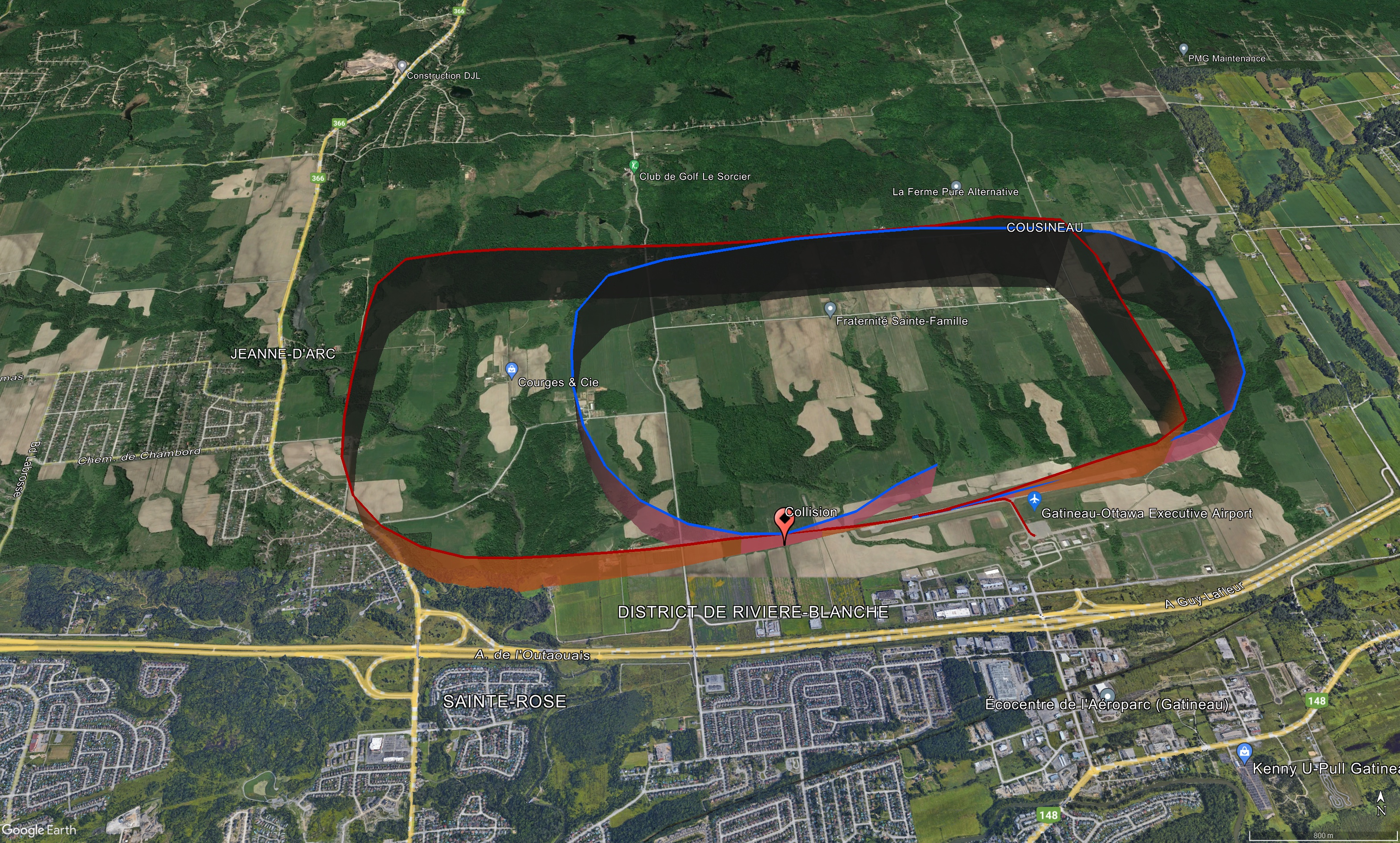Mid-air collision
Richcopter Inc. (dba Select Aviation College)
Cessna 150M, C-FUAE
and
Cessna 150M, C-GRAE
Ottawa/Gatineau Airport, Quebec
The occurrence
On the evening of 20 June 2023, 3 pilots from the Richcopter Inc. flight training unit, each flying a Cessna 150 aircraft, were conducting night circuits and touch-and-go manoeuvres under visual flight rules (VFR) from the Ottawa/Gatineau Airport, Quebec.
The 1st aircraft (registration C-GUGC) took off at 2128, followed by the 2nd aircraft (registration C-FUAE) at 2130 and the 3rd aircraft (registration C-GRAE) at 2132. During the exercise, C-GRAE ended up directly above C-FAUE. At approximately 2145, when C-GRAE was between 100 and 200 feet above ground level, it collided with C-FUAE.
Damage was observed on both aircraft after they had landed.
Media materials
News release
Investigation report: Mid-air collision during training exercise at Ottawa/Gatineau Airport, Quebec
Read the news release
Investigation information
Download high-resolution photos from the TSB Flickr page.
Class of investigation
This is a class 4 investigation. These investigations are limited in scope, and while the final reports may contain limited analysis, they do not contain findings or recommendations. Class 4 investigations are generally completed within 220 days. For more information, see the Policy on Occurrence Classification.
TSB investigation process
There are 3 phases to a TSB investigation
- Field phase: a team of investigators examines the occurrence site and wreckage, interviews witnesses and collects pertinent information.
- Examination and analysis phase: the TSB reviews pertinent records, tests components of the wreckage in the lab, determines the sequence of events and identifies safety deficiencies. When safety deficiencies are suspected or confirmed, the TSB advises the appropriate authority without waiting until publication of the final report.
- Report phase: a confidential draft report is approved by the Board and sent to persons and corporations who are directly concerned by the report. They then have the opportunity to dispute or correct information they believe to be incorrect. The Board considers all representations before approving the final report, which is subsequently released to the public.
For more information, see our Investigation process page.
The TSB is an independent agency that investigates air, marine, pipeline, and rail transportation occurrences. Its sole aim is the advancement of transportation safety. It is not the function of the Board to assign fault or determine civil or criminal liability.
